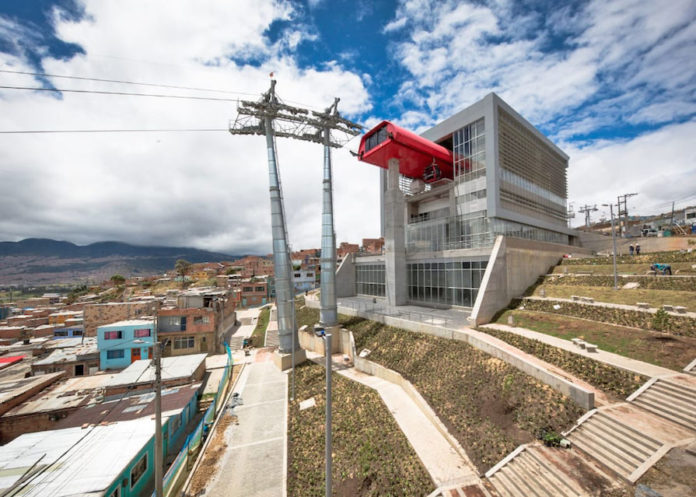For decades, Medellín has been the focus of envy of other Colombian cities when it comes to large-scale, inclusive public works. With their efficient Metro, and MetroCable, the first in the world to be fully integrated into a urban public transport system, the capital of Antioquia has pioneered urban renewal and improved the lives of many in marginalized neighborhoods. Now, its Bogotá’s turn.
After 26 months under construction and an investment of US$100 million, Bogotá got a new cable car that starting mid-December will connect many of the neighborhoods in the south of the city with the TransMilenio articulated bus system. Dubbed TransMiCable and one of the largest public works projects for the capital in decades, the city’s Development Institute (IDU) officialized the handover of this airborne transit system to the mayoralty last month. The cable car will benefit 750,000 residents of Ciudad Bolívar and plenty of curious tourists.
Reaching the heights of Mirador del Paraíso in Tunal, the red, high-flying gondolas will save residents at least an hour’s commute, in a 15-minute journey that also guarantees stunning views of the a sprawling capital. TransMiCable has a capacity to transport 7,200 passengers every hour over a distance of 3,4 kilometers.
The network also counts with four stations – El Tunal, Juan Pablo II, Manitas and Mirador del Paraíso – which will receive 163 cabins of the aerial tramway. All the gondolas are equipped with folding benches and can accommodate up to 10 passengers leaving space for bicycles, wheelchairs and carriages.
“TransMiCable is proof of an urban revolution taking place in the city,” remarked Mayor Enrique Peñalosa during the inaugural ceremony, in which guests were treated to a ride in the skies over Bogotá. The transportation system also includes a SuperCade administration complex, library, and five parks. “TransMiCable is an example of how citizens are being included in large public projects,” remarked IDU’s director Yaneth Mantilla, regarding workshops with 35,000 students from Ciudad Bolívar in order to make them feel empowered by urban renewal. A community-led initiative with 876 local representatives is also in place to provide additional grass-roots support for a transportation system that will be operated by TransMilenio.
“This is an integrated city model we are building,” said Mantilla of a project that received technical advice from the International Finance Corporation (IFC) of the World Bank and Swiss Economic Cooperation (SECO).
Even though cable cars are associated with ski resorts, this innovative form of transportation is also being adapted to other world cities, with plans in the works for Santo Domingo in the Dominican Republic and a 10-kilometer ride over Istanbul, Turkey.
Bogotá, now joins Mexicable, which opened in 2016 in Mexico City, and Medellín’s MetroCable, inaugurated in 2004, in having a changing urban skyline, and one through which residents will move efficiently and without leaving a carbon footprint.

